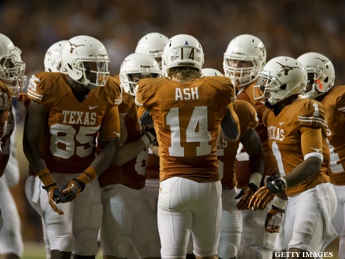The scholarship players on this year's Louisville Cardinals, the top overall seed heading into the NCAA tournament, are each "paid" about $17,000 a year to play. In other words, by accepting a scholarship they don't have to pay for board and tuition.

Meanwhile, the top three players on the Miami Heat, the best team in the NBA, are each paid at least $17 million in salary this year. Sure, these guys are professionals and live a more demanding lifestyle than their college counterparts. But are LeBron James, Dwyane Wade and Chris Bosh really worth 1,000 times more than Peyton Siva, Russ Smith and Chane Behanan?
According to a study released by the National College Players Association (NCPA) and Drexel University, the answer is a resounding "no." Although Miami's Big 3 may be paid 1,000 times more than Louisville's players, new research suggests the Heat are actually only worth about 17 times the value of the Cardinals' stars.
For the study, the researchers estimated what college players would be worth if revenue in the NCAA was distributed the same way it was in the NBA and the NFL. This is what the authors deemed "fair market value." In the NBA, players are guaranteed at least 50 percent of all revenue, while NFL players get 46.5 percent. If that same logic was applied to the NCAA, players at Louisville would make about $1.6 million per year.
According to the study, Louisville basketball players would be the highest paid in all of college athletics. Syracuse, Duke, UNC and Kentucky round out the top five.
The top five football schools, in terms of their players' fair-market value, are Texas, Michigan, Alabama, Auburn and Georgia. The scholarship value at Texas is around $21,000, and according to the study the fair-market value of a football player is about $568,000. So Texas players "lose out" on more than $2 million per year.
Tony Manfred of Business Insider points out that, even if the NCAA was to institute some sort of pay-to-play scheme, the revenue sharing wouldn't come anywhere near what it is in professional sports. So it's not like these guys would be becoming millionaires.

But if the NCAA was to allow for just a few thousand extra dollars per athlete, it would go a long way. The NCPA and the Drexel report found that the scholarships often fall short of what student-athletes truly need, and in some cases this causes the athletes to make poor decisions in order to scrape together extra cash.
In addition to recommending that the NCAA allow universities to match a student-athlete's "true need," the report makes several other suggestions. It advocates an "Olympic amateur" model for sponsorships, where students would be free to seek commercial opportunities just like Olympic athletes, as well as an "educational lockbox" or trust fund that could be accessed by a student after graduation.
While more and more studies advocate a pay-for-play model in some form, conference and NCAA executives don't seem to be on the same page. Earlier this week, Big Ten commissioner Jim Delany said that if legislation demanded that athletes receive a portion of television revenue, his conference could scale back to a Division-III model.
To read the entire NCPA and the Drexel report, see here.
(H/T to Business Insider)




